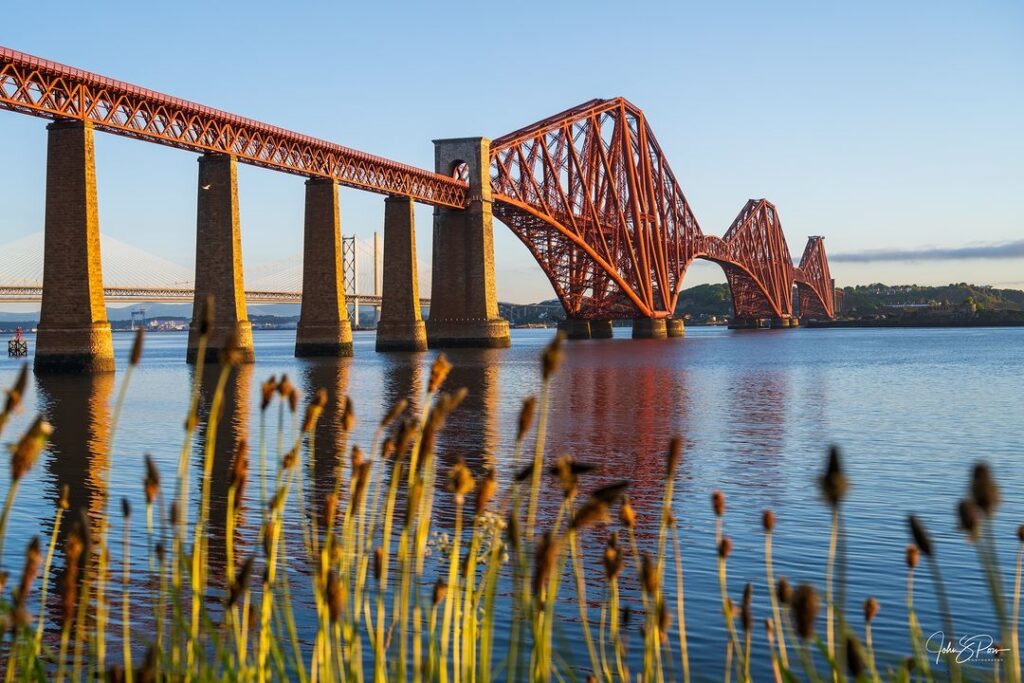The Forth Bridge: Engineering Marvel in Scotland
The Forth Bridge is an iconic symbol of Scotland, renowned for its striking design and engineering brilliance. Spanning the Firth of Forth, this cantilever railway bridge connects the city of Edinburgh with Fife, offering not just a vital transport link but also a breathtaking sight that draws tourists from around the world. Whether you’re a history buff, an engineering enthusiast, or simply someone who appreciates stunning views, the Forth Bridge is a must-see destination.
What to See and Do
When visiting the Forth Bridge, there are several activities and sights to enjoy. Start by taking a leisurely walk along the Forth Road Bridge, which runs parallel to the railway bridge, offering fantastic views and photo opportunities. For a closer look, consider a boat tour on the Firth of Forth, which provides a unique perspective of the bridge’s intricate structure. If you’re interested in learning more about the bridge’s history and construction, the nearby Queensferry Museum offers informative exhibits and displays.
For those who enjoy hiking, the Fife Coastal Path offers scenic trails with stunning views of the bridge and the surrounding landscape. Additionally, the quaint town of South Queensferry, located at the southern end of the bridge, is worth exploring. Here, you can enjoy charming shops, cafes, and restaurants, as well as the picturesque waterfront.
A Bit of History and Interesting Facts
The Forth Bridge was completed in 1890 and was considered a marvel of engineering at the time. Designed by Sir John Fowler and Sir Benjamin Baker, it was the first major structure in Britain to be constructed using steel. The bridge spans 2,467 meters (8,094 feet) and was the longest cantilever bridge in the world until 1917. Its distinctive red color and unique design have made it a UNESCO World Heritage Site since 2015.
An interesting fact about the Forth Bridge is that it was built to withstand the harsh Scottish weather and the strong winds of the Firth of Forth. The bridge’s construction involved over 50,000 tons of steel and 6.5 million rivets, showcasing the incredible craftsmanship and attention to detail of its builders. The phrase “like painting the Forth Bridge” originated from the continuous maintenance required to keep the bridge in good condition, although modern materials have reduced the need for constant repainting.
Getting There and Tips for First-Time Visitors
Reaching the Forth Bridge is relatively easy, whether you’re coming from Edinburgh or other parts of Scotland. By train, you can take a service from Edinburgh Waverley Station to North Queensferry or Dalmeny, both of which are close to the bridge. If you prefer to drive, the bridge is accessible via the A90 road, with parking available in South Queensferry.
For first-time visitors, it’s a good idea to check the weather forecast before your trip, as the best views of the bridge are on clear days. Wear comfortable shoes if you plan to walk or hike, and bring a camera to capture the stunning scenery. If you’re visiting in the summer, consider timing your visit to coincide with one of the local festivals or events in South Queensferry, which can add an extra layer of enjoyment to your trip.
In summary, the Forth Bridge is not just an engineering marvel but also a testament to human ingenuity and perseverance. Its historical significance, combined with its breathtaking beauty, makes it a must-visit destination for anyone traveling to Scotland.








